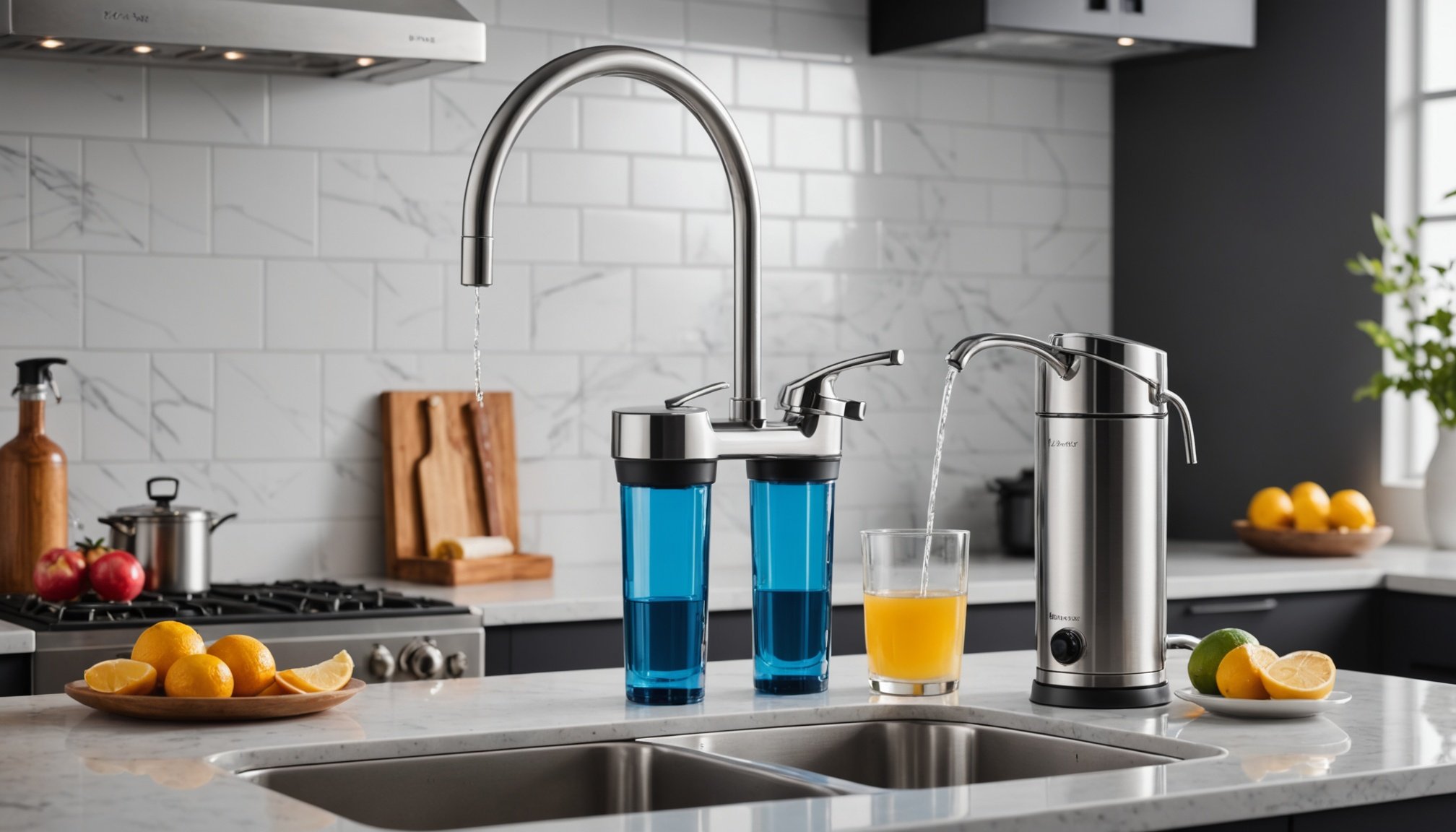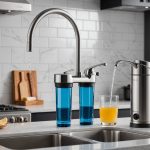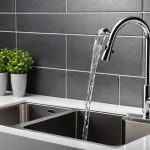Ultimate Kitchen Wellness: Your Comprehensive Guide to Effortlessly Installing a Water Filtration System
Why You Need a Water Filtration System in Your Home
When it comes to ensuring the health and well-being of your family, one of the most critical aspects to consider is the quality of the water you drink and use in your home. Tap water, although generally considered safe, can contain a myriad of contaminants that can affect both your health and the quality of your life.
“Water is not just essential for life, it is life itself,” as Antoine de St Exupéry once said. However, the water coming out of your tap can be far from ideal. It may contain chlorine, heavy metals, pesticides, and even residues of medications, all of which can have detrimental effects on your health[1][2].
Additional reading : Designing an inclusive kitchen: innovative tips for wheelchair-friendly spaces
Understanding the Types of Water Filtration Systems
Before diving into the installation process, it’s crucial to understand the different types of water filtration systems available. Here are some of the most common ones:
Reverse Osmosis (RO) Systems
- These systems use a semipermeable membrane to remove a wide range of contaminants, including dissolved solids, bacteria, and viruses.
- They are highly effective but can also remove beneficial minerals from the water.
- Example: Many home water filtration systems, like those from Amilo, incorporate RO technology along with other filtration methods[1].
Activated Carbon Filters
- These filters use activated carbon to remove chlorine, taste, and odor from water.
- They are effective against many organic compounds but may not remove all inorganic contaminants.
- Example: The Weeplow Neptune 11L system uses activated carbon filters to purify water from any source[3].
Gravity-Fed Filters
- These systems rely on gravity to filter water through multiple stages, often including activated carbon and ceramic elements.
- They are non-electric and can be very effective in removing a wide range of contaminants.
- Example: The Weeplow Neptune 11L is a gravity-fed system made from food-grade stainless steel[3].
How to Choose the Best Water Filtration System for Your Home
Choosing the right water filtration system can be overwhelming, given the numerous options available. Here are some key factors to consider:
Also read : Elevate your culinary skills: essential guide to integrating a sous-vide system into your home kitchen
Contaminant Removal
- Look for a system that can remove a broad spectrum of contaminants, including chlorine, heavy metals, pesticides, and pharmaceutical residues.
- Example: The Amilo filtration system is designed to remove contaminants as small as 0.5 microns, ensuring high-quality water throughout your home[1].
Maintenance and Service
- Consider the maintenance requirements of the system. Some systems need frequent filter replacements, while others may require less maintenance.
- Example: The Amilo system comes with 4 years of pre-installed filter cartridges and is designed for long-term use with minimal maintenance[2].
Cost and Value
- Evaluate the cost of the system, including the initial purchase price and ongoing maintenance costs.
- Compare this to the cost of bottled water, which can be up to 400 times more expensive than filtered tap water[2].
Installation and Compatibility
- Ensure the system is compatible with your home’s plumbing and consider whether professional installation is required.
- Example: The Amilo system is installed by a professional at the main water entry point of your home, ensuring all water used in the house is filtered[1].
Step-by-Step Guide to Installing a Water Filtration System
Installing a water filtration system can seem daunting, but with the right guidance, it can be a straightforward process.
Pre-Installation Checklist
- Determine the Installation Location: Ideally, the filter should be installed at the main water entry point of your home to ensure all water is filtered.
- Check Compatibility: Ensure the system is compatible with your home’s plumbing system.
- Gather Tools and Materials: Depending on the system, you may need a plumber’s tape, wrench, and other basic plumbing tools.
Installation Process
- Shut Off the Water Supply: Locate the main shut-off valve and turn it off to prevent water flow during installation.
- Install the Pre-Filter: For systems like Amilo, start with a 1-micron pre-filter to catch larger particles before the main filtration stage[1].
- Connect the Main Filter: Connect the main filter unit, which may include activated carbon or reverse osmosis stages, to the pre-filter.
- Test the System: Turn on the water supply and check for leaks. Run some water through the system to ensure it is working correctly.
Maintenance and Upkeep of Your Water Filtration System
To ensure your water filtration system continues to provide high-quality water, regular maintenance is essential.
Filter Replacement
- Schedule Regular Replacements: Most systems require filter replacements every 1-2 years or after a certain volume of water has been filtered.
- Monitor Water Quality: Keep an eye on the taste and odor of your water; if it changes, it may be time to replace the filters[1].
Cleaning and Servicing
- Clean the System: Regularly clean the exterior and interior of the system to prevent buildup and ensure optimal performance.
- Check for Leaks: Periodically inspect the connections for any signs of leaks.
Benefits of Having a Water Filtration System in Your Home
Installing a water filtration system offers numerous benefits that extend beyond just improving the taste of your drinking water.
Health Benefits
- Remove Harmful Contaminants: A good filtration system can remove a wide range of contaminants, including those that can cause health issues.
- Improve Skin and Hair Health: Using filtered water for bathing and washing can improve skin and hair health by reducing exposure to harsh chemicals like chlorine[1].
Environmental Benefits
- Reduce Plastic Waste: By using a filtration system, you can significantly reduce your reliance on bottled water, thereby reducing plastic waste.
- Save Money: Filtered tap water is much cheaper than bottled water, making it a cost-effective solution in the long run[2].
Practical Benefits
- Extend Appliance Life: Filtered water can help extend the life of your appliances by reducing the buildup of minerals and other contaminants.
- Improve Taste and Odor: Filtered water tastes better and has a fresher odor, making it more enjoyable to drink and use in cooking[1].
Comparative Analysis of Popular Water Filtration Systems
Here is a comparative analysis of some popular water filtration systems to help you make an informed decision:
| System | Amilo | Weeplow Neptune 11L | Biolan Grey Water Filter |
|---|---|---|---|
| Type | Reverse Osmosis + Activated Carbon | Gravity-Fed Activated Carbon | Natural Filtration for Grey Water |
| Contaminant Removal | Chlorine, Heavy Metals, Pesticides, Pharmaceuticals | Chlorine, Heavy Metals, Bacteria, Viruses | Organic Compounds, Bacteria |
| Maintenance | 4 Years of Pre-Installed Filters, Professional Installation | Filter Replacement Every 22,700 Liters | No Chemicals, Easy Installation |
| Cost | Initial Purchase + 4 Years of Filters Included | Initial Purchase + Filter Replacements | Initial Purchase + Low Maintenance |
| Installation | Professional Installation at Main Water Entry | DIY or Professional Installation | Easy Installation, No Digging Required |
| Compatibility | Compatible with Most Home Plumbing Systems | Compatible with Tap Water and Well Water | Suitable for Ecological Homes and Autonomous Houses |
| Additional Features | Vitalization Stage, Long-Lasting System (Over 20 Years) | Non-Electric, Food-Grade Stainless Steel | Recycles Grey Water for Gardening and Toilets |
Installing a water filtration system is a simple yet powerful step towards enhancing the health, sustainability, and overall quality of life in your home. By choosing the right system and following the steps outlined above, you can ensure that every drop of water in your home is clean, safe, and beneficial for your family.
As you embark on this journey to improve your home’s water quality, remember that “the best investment you can make is in your health,” and a good water filtration system is a significant part of that investment.
Additional Resources
- Amilo Water Filtration System: For more information on the Amilo system, including pricing and installation details, visit their website[1][2].
- Weeplow Neptune 11L: Check out the Weeplow website for detailed instructions and FAQs on their gravity-fed filtration system[3].
- Biolan Grey Water Filters: Learn more about Biolan’s ecological solutions for grey water recycling and filtration[4].
By taking the time to understand and invest in a quality water filtration system, you are not only improving your health but also contributing to a more sustainable and environmentally friendly lifestyle.











